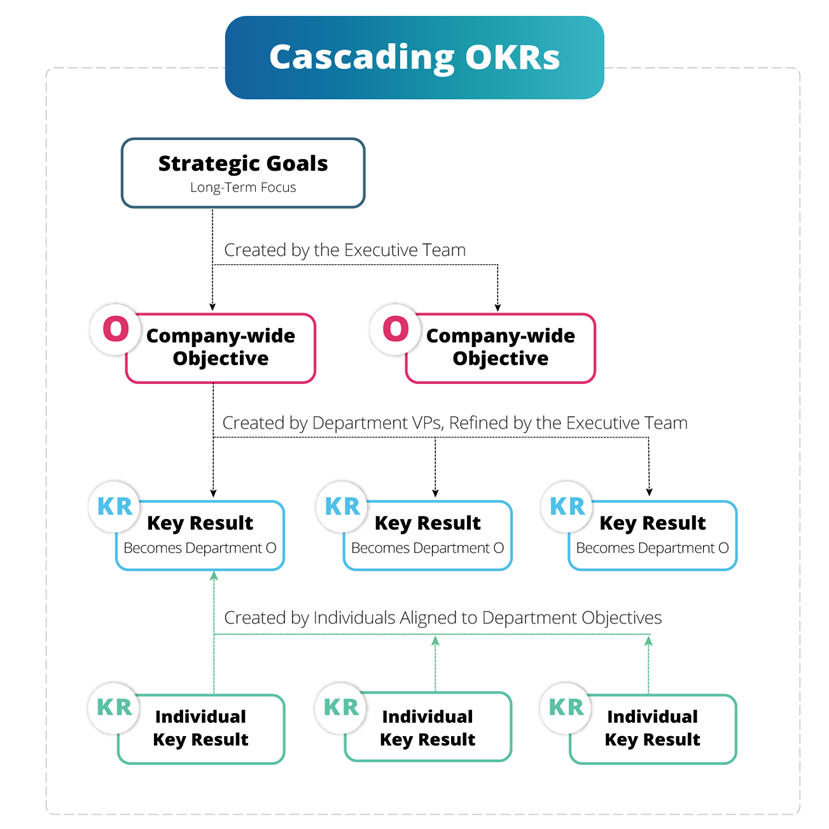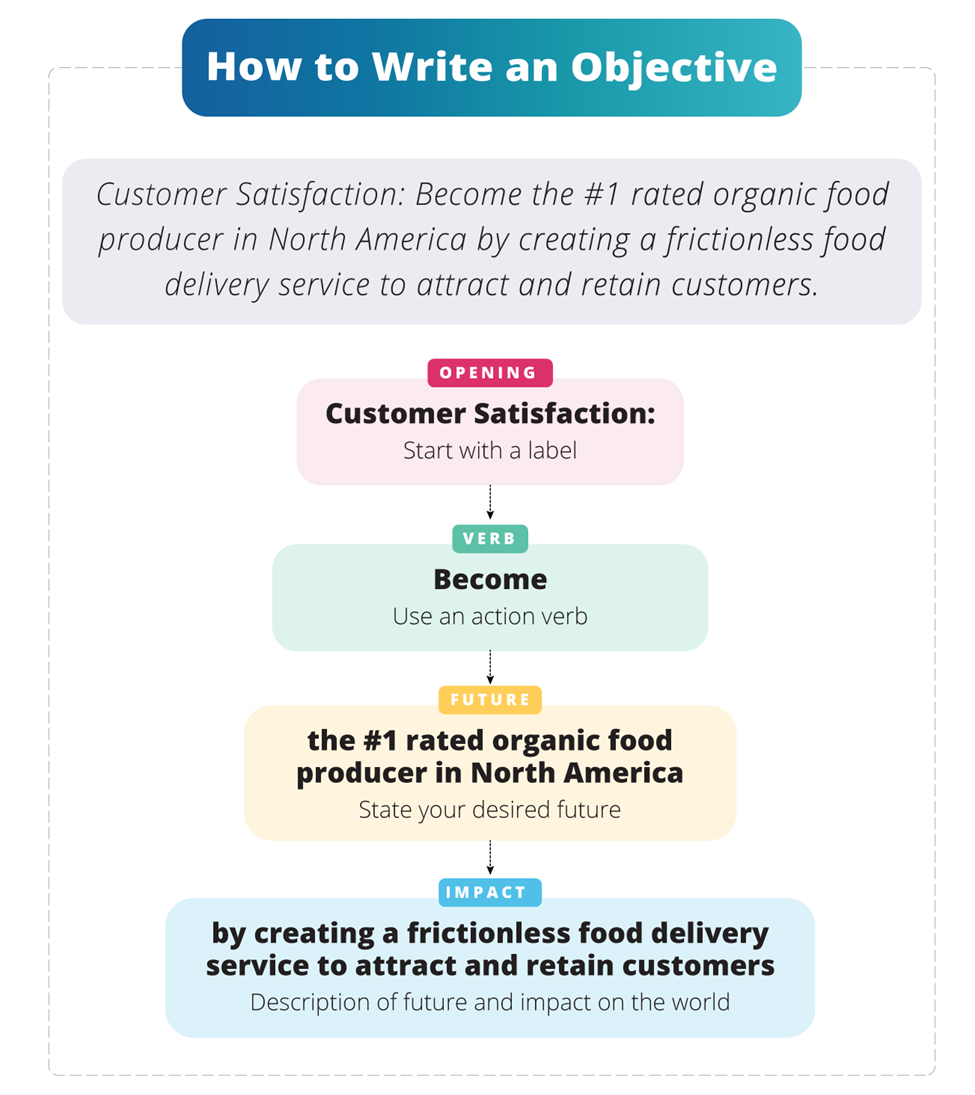The Secret to Better Objectives
The explosion of OKRs in the strategic planning and business world is no secret by now. And for good reason– it’s helped organizations like Google, Adobe, and Microsoft transform their businesses by creating accountability and built-in agility.
At OnStrategy, we appreciate the OKR methodology for enforcing the time-tested best practices of creating outcome-focused goals backed by agile, quarterly reviews, and adaptation.
However, we believe there is a simpler and improved approach for developing Objectives across your organization that creates alignment and solves a lot of the pain points associated with the traditional OKR methodology.
Problem with the Classic Approach to OKRs
In a classic adaptation, every individual establishes individual Objectives and supporting key results. And, in theory, that sounds great.
Until you have an entire set of OKRs created by your team that doesn’t align with your strategic direction. And the reason this happens is there is no cascaded or provided Objective for your team to align to. So, here’s what that looks like in practice:
- A set of OKRs that don’t support your organization’s direction.
- OKRs that create puddles of focus and pull in different directions.
- Inconsistencies in OKR formats between individuals and different teams in your organization.
The Solution: Using Shared Organizational Objectives
We believe that creating organization-wide Objectives solves a lot of the pain points associated with the traditional OKR approach.
We strongly believe that OKRs are not as effective without clear organizational alignment to your big, bold direction. It is the core reason we have deviated from some other OKR practitioners to recommend that organizations create shared organization-wide Objectives and shared department Key Results.
What are Shared Organizational Objectives?
When we say shared Objectives, we mean that the entire organization has 3-5 shared annual Objectives that align to your organization’s long-term direction. These Objectives are created by your leadership team and serve as the backbone for creating and aligning your team.
From your shared annual organization-wide Objective, you’ll create 3-5 annual department Key Results that are also shared across that department.
The power of shared organizational Objectives is in the entire company/organization working towards the same outcomes. This is where the power of OKRs lives—every employee is connected to the big, bold vision; knows how they are contributing; AND understands what is expected of them.
Here’s what that looks like in practice:

How to Write Objectives
As you write your Objectives, remember that they are your “must delivers” for the year. We recommend no more than 3 to 5. They answer the following questions:
- What must we achieve?
- How does that impact our organization?
- If others read the Objective, will it inform their choices?

Structuring Your Objective Statements
As you write your objectives, you can follow this formula to help you create them.
- Label: We like to label Objectives so you know which area of the plan you are targeting.
- Start with a Verb: Start each KR with an action verb.
- Describe the impact: Describe the impact you need to make this year. What must you achieve?
- Intent/Why: Describe how or why it will change your organization.
Just Remember: Shared Organization-wide Objectives are Easier!
If you take one thing away from this article, just remember this: creating organization-wide Objectives solves a lot of the pain points associated with the traditional OKR approach.











